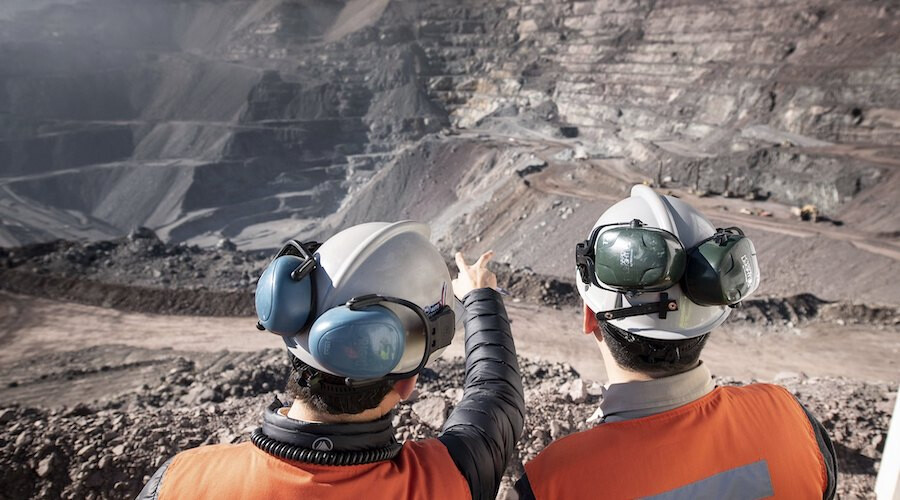
Santiago, Chile – Despite facing a complex landscape of declining ore quality, water scarcity, and permitting delays, Chile's major copper mining companies remain bullish about the future. Industry leaders argue that the current challenges present significant opportunities for strategic investment and technological innovation to meet the world's insatiable appetite for copper, a critical metal in the ongoing green revolution.
The need for copper is reaching unprecedented levels, driven by its essential role in electric vehicles, solar power infrastructure, and the ever-expanding network of artificial intelligence data centers. Projections indicate a doubling of global copper demand from 25 million metric tons annually to a staggering 50 million metric tons by 2035. This surge has sparked concerns about a potential 5.5-million-ton supply deficit by 2034, with significant attention focused on Chile, the world's leading copper producer, responsible for approximately 23% of global output.
However, recent data highlights the headwinds facing the Chilean mining sector. Simon M. Jowitt, Director and State Geologist at the Nevada Bureau of Mines and Geology, noted a decline in Chile's copper production to 5.3 million metric tons in 2024, down from 5.6 million metric tons in 2019. This decrease underscores the growing obstacles that companies are striving to overcome.
Mounting Challenges Test Industry Resilience
Several key issues are impacting Chile's copper production. A significant concern is the declining ore quality. BHP, a global mining giant, estimates that the average copper ore grade has fallen by roughly 40% since 1991. This necessitates the extraction and processing of larger volumes of ore to achieve the same copper yield, consequently driving up operational costs. Antofagasta, for instance, experienced this firsthand when increased production at its Los Pelambres mine in the second quarter of 2024 was offset by lower grades at other sites.
Another critical challenge is water scarcity, particularly in the arid Atacama region, where a significant portion of Chile's copper deposits are located. The region's geography limits natural precipitation, and the extraction of approximately 90 cubic meters of water per ton of copper places immense pressure on available groundwater resources. This has led to legal repercussions, such as the 2021 lawsuit against BHP resulting in a $93 million settlement over water usage.
To mitigate water shortages, mining companies are increasingly investing in desalination plants, exemplified by Antofagasta's $2 billion investment in a 38-mile pipeline system supplying desalinated water to the Los Pelambres mine. While effective, these solutions are capital-intensive.
Furthermore, the industry faces increasing regulatory scrutiny and permitting delays due to growing environmental concerns. Despite the government's support for the mining sector, which contributes significantly to Chile's GDP (approximately 13.6%), critics argue that slow permit approvals are hindering crucial investments in new mining projects. The recent denial of a permit for the Dominga iron and copper mine in January due to environmental considerations serves as a stark example. María José Vidal Olmedo, a mining and taxation lawyer at Vidal Abogados, pointed out that "long waiting times have created uncertainty and delays in key projects, potentially affecting the country's competitiveness compared to other mining jurisdictions."
Industry Leaders Embrace Innovation and Collaboration
Despite these considerable challenges, major players in Chile's mining sector express strong optimism and are actively pursuing innovative solutions.
Anglo American, for example, remains committed to its ambitious goal of achieving 1 million metric tons of global copper production by early 2030. A cornerstone of this strategy is a significant partnership with Chile's state-owned copper company, Codelco, which is projected to add 120,000 metric tons to their production from 2030. Addressing environmental concerns, James Wyatt-Tilby, Group Head of Corporate Affairs at Anglo American, highlighted the adoption of advanced technologies such as "coarse particle recovery" to enhance metal separation efficiency, reduce energy consumption, and improve water recycling. He also acknowledged the necessity of desalination, with the company investing in plants for its Collahuasi and Los Bronces operations, the latter utilizing industrial wastewater.
Antofagasta shares this confident outlook. Henry Don of Brunswick Group, representing Antofagasta, affirmed the company's aim to increase its annual copper production from 664,000 to 900,000 metric tons through ongoing initiatives and investments in operational improvements.
María José Vidal Olmedo believes that the current environment is prompting companies to prioritize "productivity and sustainability." She notes significant investments in "process optimization, the development of new technologies, and the exploration of deposits to maintain the industry's competitiveness."
Looking ahead, Vidal Olmedo emphasizes the investment potential, stating that "this moment represents a unique opportunity to drive new technologies, strengthen efficiency, and diversify copper sources, ensuring that Chile remains a leader in producing this strategic metal for the global energy transition."
These critical topics are slated for discussion at The CRU World Copper Summit in Santiago this April. The industry will be closely watching the upcoming Q1 reports to gauge the initial impact of these innovative strategies on production levels, as the world continues to rely heavily on Chile to meet its ever-growing copper demands.
[Copyright (c) Global Economic Times. All Rights Reserved.]



























